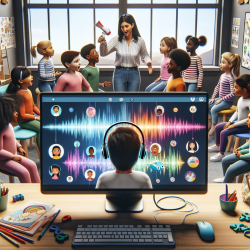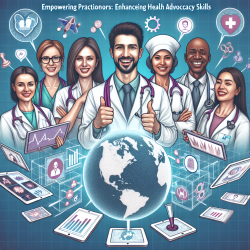Introduction: A New Era in Speech Therapy
In the landscape of speech-language pathology, the advent of telehealth has opened new avenues for delivering effective interventions to children, especially those in underserved areas. This blog delves into the promising outcomes of a pilot study examining the efficacy of telehealth for treating speech sound disorders in school-age children. With the shortage of speech-language pathologists (SLPs) being a significant challenge, telehealth emerges as a beacon of hope, offering an innovative solution to bridge the gap.
The Study: Telehealth vs. Traditional Models
The study, conducted in a rural Ohio school district, compared two service delivery models: live interactive videoconferencing (telehealth) and conventional side-by-side intervention. Utilizing the Goldman Fristoe Test of Articulation-2, the study measured the progress of students receiving therapy through these models. The results were encouraging, showing significant improvements in speech sound production for both groups, with telehealth participants achieving greater mastery of their Individual Education Plan (IEP) goals.
Data-Driven Insights: The Power of Telehealth
Key findings from the study highlighted the effectiveness of telehealth in achieving comparable, if not superior, outcomes to traditional methods. The data revealed that:
- Telehealth participants showed significant improvement in articulation skills, with progress on par with or exceeding that of their peers in side-by-side settings.
- The telehealth model facilitated individualized intervention, which is crucial for addressing specific speech sound errors effectively.
- Students engaged in telehealth sessions demonstrated higher engagement and motivation, attributed to the interactive nature of the technology used.
Technological Advancements: TinyEYE's Role
TinyEYE's innovative speech therapy software played a pivotal role in this study. The software's interactive features, such as games and visual reinforcements, not only enhanced the therapy experience but also allowed for precise data collection and progress monitoring. This technology ensured that both SLPs and students could collaboratively engage in activities, leading to improved learning outcomes.
Challenges and Future Directions
While the study's results are promising, certain challenges remain. The telehealth model's reliance on individual sessions may limit its application in traditional school settings, where group sessions are more common. However, with strategic collaboration and support, these challenges can be mitigated.
Future research should focus on expanding the sample size, exploring diverse communication disorders, and refining the telehealth model to integrate seamlessly with classroom activities. This will further validate telehealth as a robust service delivery model for speech-language intervention.
Conclusion: A Path Forward
The study underscores the potential of telehealth to transform speech therapy, making it accessible and effective for children across various settings. By leveraging technology, we can ensure that every child has the opportunity to overcome communication barriers and reach their full potential. TinyEYE is at the forefront of this revolution, committed to creating better outcomes for children worldwide.
For more information, please follow this link.










